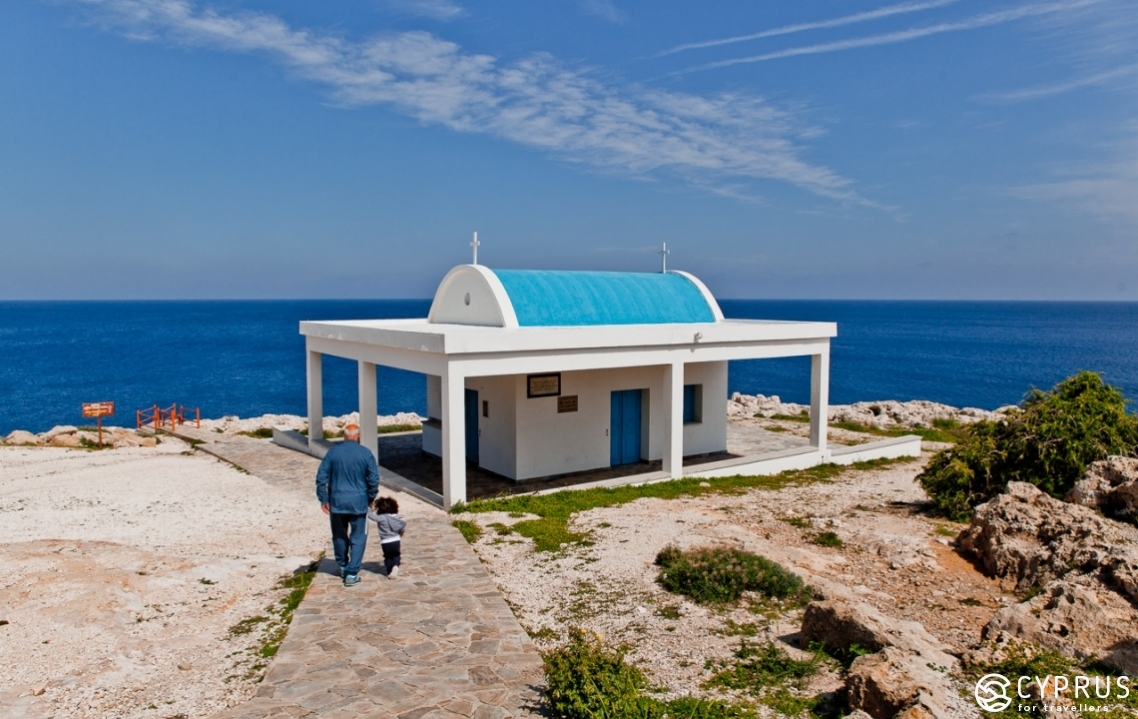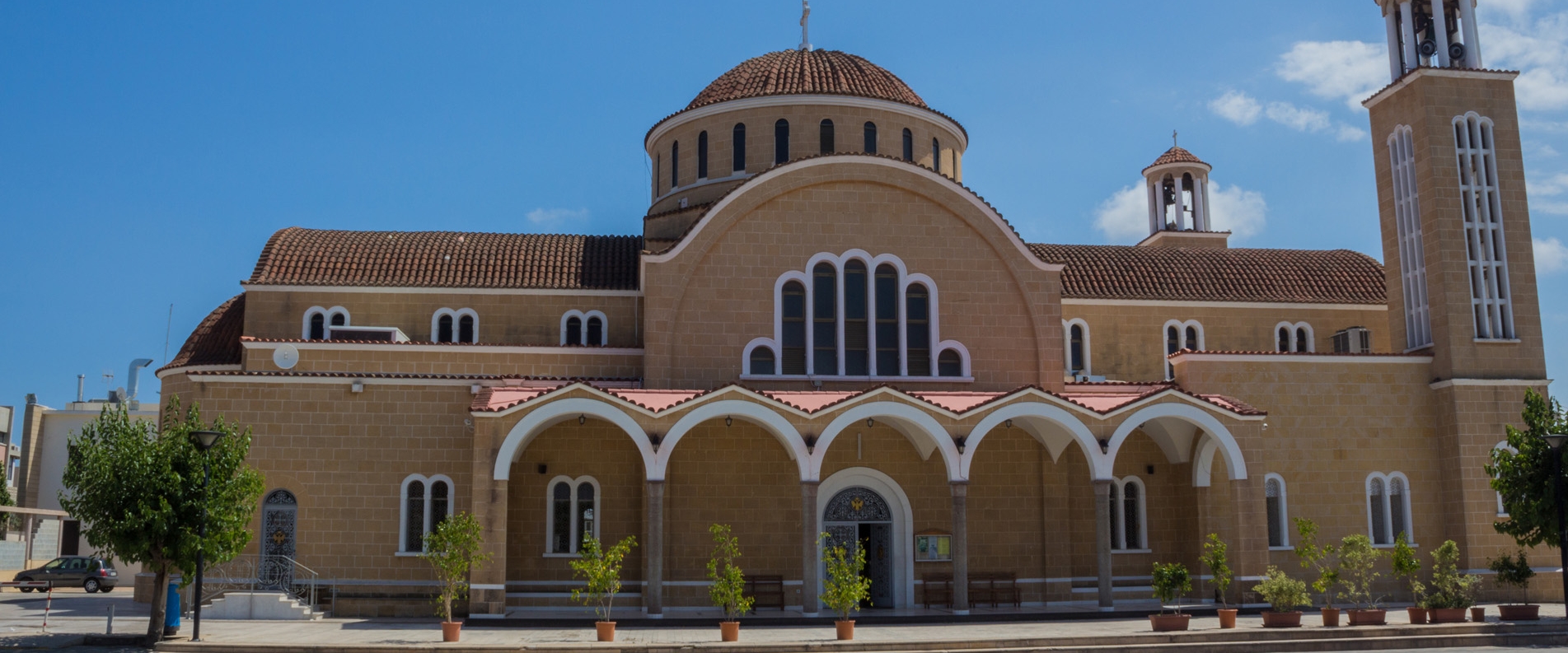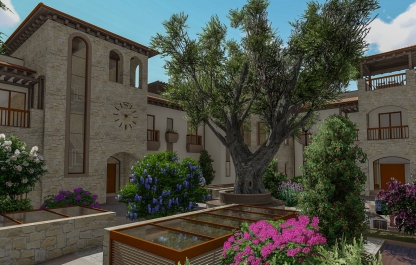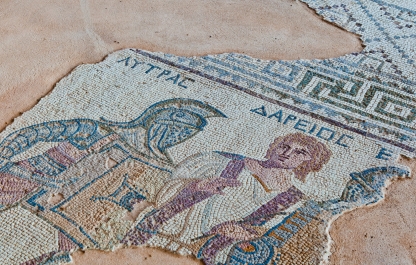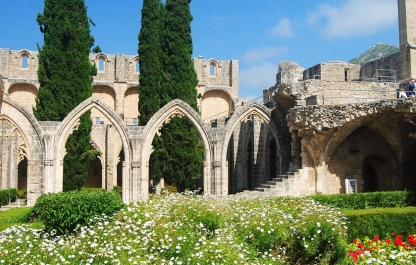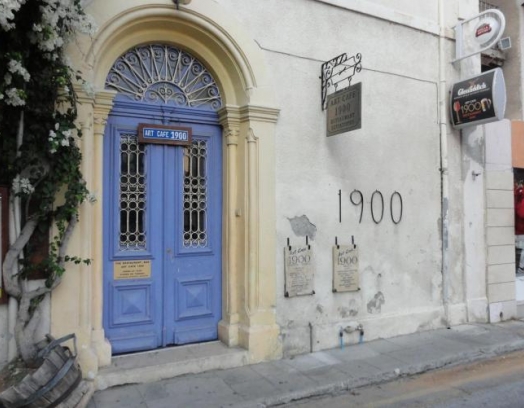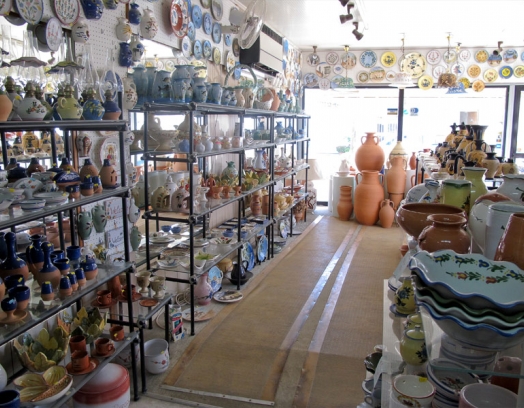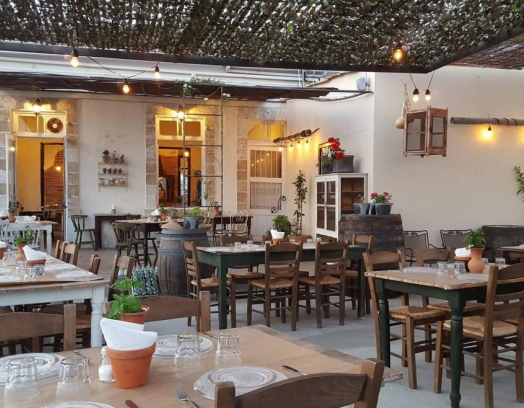The rich and ancient history of Cyprus cannot help but be reflected in its architecture and building traditions: many of the surviving constructs and some of those designed in modern times are genuine works representing the art of building.
However, alongside the renowned ancient ruins, Byzantine temples and various other monuments, a special place in the island's culture is held by those pieces of architecture which have remained nameless, by historical plots and urban and rural regions which were developed by man. These traditional buildings, which are mostly residential, are a material reflection testifying to the living culture of the island's people, their perceptions of the world and of course, the political and economic conditions in their lives.
In the present day, one can observe a wide rebirth of Cypriot traditions and a “return to its origins”. Nowadays there is more than a small number of villagers, especially in the island's mountainous regions, who live in old stone houses. Many foreign people who come to the island have started to confidently invest in restoration projects and progressing the Cypriot tradition of stone architecture.
In the very earliest days, that is to say “at the dawn of mankind”, buildings were erected from raw stone: the most widespread materials used were beach pebbles of various kinds, sometimes with the application of an adhesive solution. For the construction of various “objects” a wide array of sedimentary rocks was used, such as chalk, reef limestone, calcarenite and limestone silicates; igneous rocks such as gabbro-diabase and others were also used.
In the age of antiquity (8-6 BC) the Greeks and Romans, who ruled Cyprus, left numerous constructs on the island. Today, thanks to many years of archeological investigations and scientific research, ancient city states have reemerged. Cities such as Kourion, Amathus, Kition, Salamis and ancient Pathos, with the remains of their magnificent temples, amphitheatres, stadiums and basilicas, have begun to exist once again; still with the hot baths and various reconstructions of the residencies where the rulers and members of the aristocracy once lived.
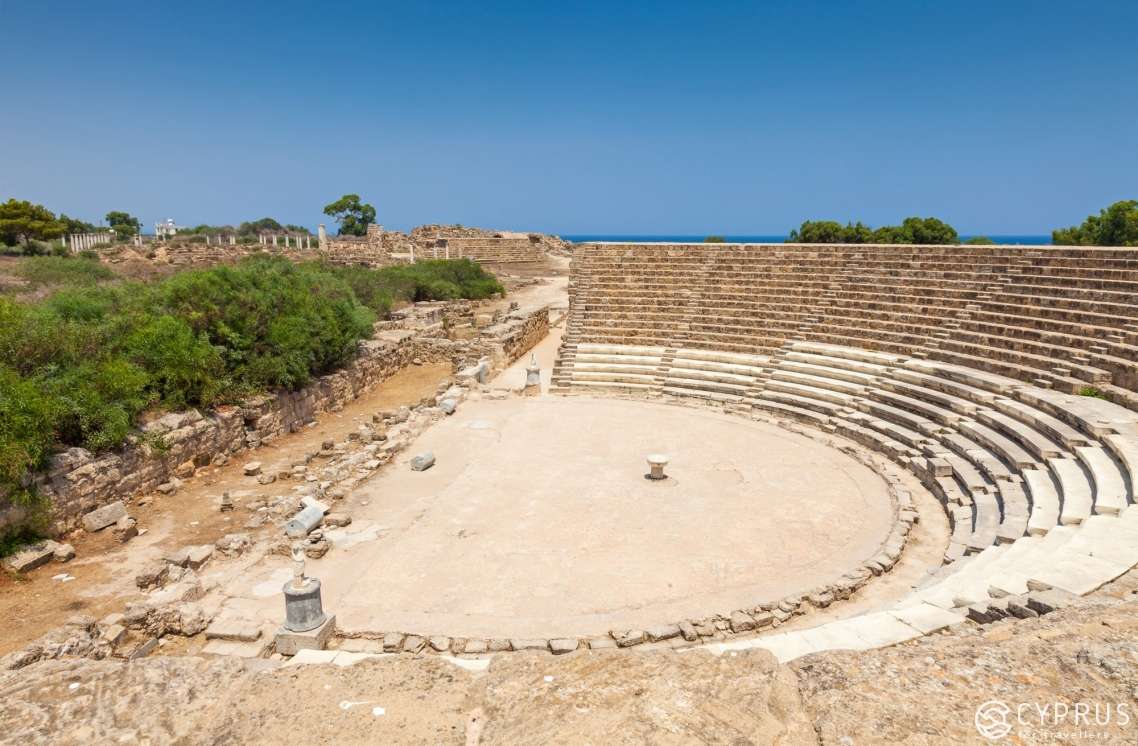
Building Stone in Antiquity and Times of Old
Throughout the ages, stone has been mined in Cyprus, mainly in the vicinity of settlements where it has been used in construction.
Since ancient times, man has felt the necessity to construct reliable shelter to protect itself from various meteorological phenomena (rains, storms, flooding and the like), in addition to defending from the attacks of wild animals and the raids of hostile (and no less wild) neighbouring tribes.
As such, stone was initially used in its natural form (rubble and quarry masonry) as the main construction material.
Let’s go into a little more detail about this particular means of stone construction, which is still used to this day.
Rubble refers to a setting of large natural rocks (quarry stone) weighing from 30 to 50 kg and measuring up to 0,5 cm in diameter; these rocks have an irregular shape with two approximately parallel surfaces (beds).
The fundamental building materials are limestone, sandstone, shell rock, granite and others, which have long been used to make the wall foundations of future buildings, reaching up to two floors high.
Technology: larger rocks are predominantly split into smaller pieces (skirting); the sharp edges are then chipped off and the stones are adjusted into the shape of a rectangular block.
During the last prehistoric period (particularly in the Bronze Age, ca. 1200 BC) the first large settlements began to emerge in Cyprus, followed by Greek-style city states, where architectural constructs were erected with various functions (administrative, religious and others). At the same time, people began to confidently cut and hew stone (stone blocks) and the use of stone blocks gradually began to predominate.
Depending on the constructions built using this type of stone and method, building stones came in a wide variety of structures and types. Calcarenite, reef and other types of limestone were the main types used.
Raw materials for face works were also mined from local deposits: the stone was hewn and split apart in quarries; it was relatively simple to carve any pattern onto white stone, which was durable in natural conditions.
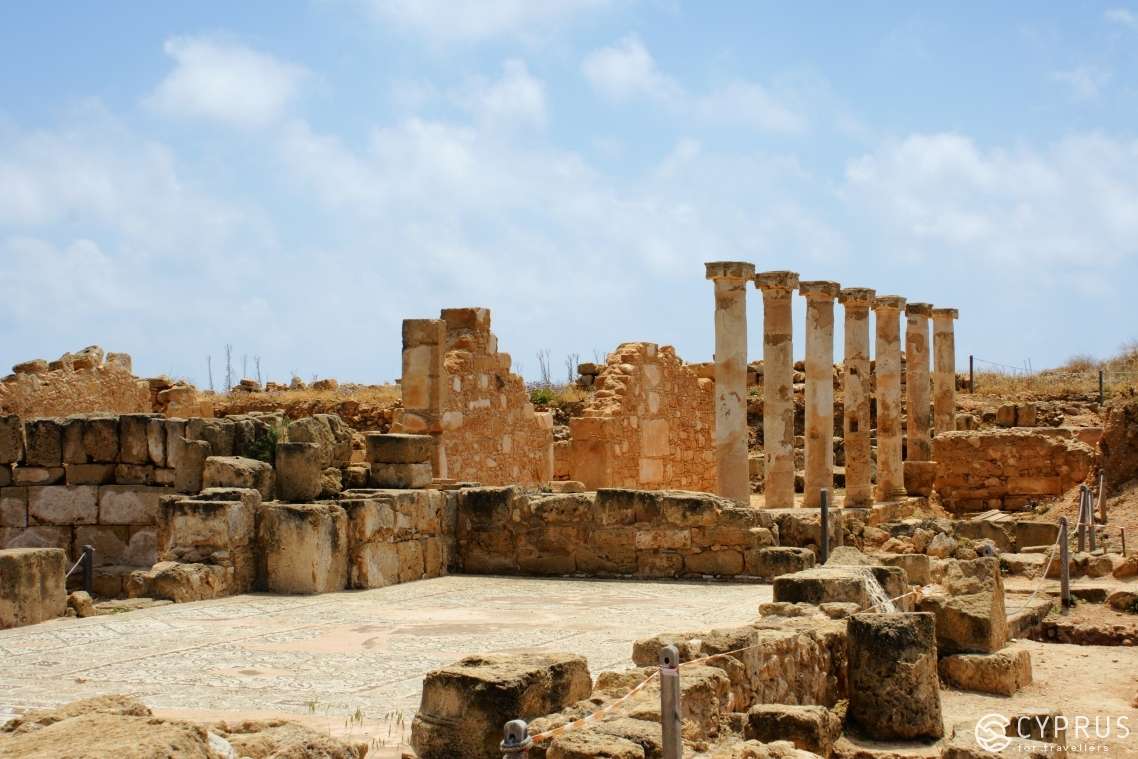
Background Reference: the masonry of natural stones and regular shaped blocks is known for its resistance to freezing and erosion, being strong, and possessing high decorative qualities; it also has a low susceptibility to abrasion. Soft, porous rocks from the mountains, in the form of sawn off, scantling stones, weighing up to 45 kg (porous tuffs, shells etc.) serve as the material used for the internal and external walls of buildings. Large wall blocks designed for installation with the aid of lifting mechanisms are often created from porous mountain rocks (in Cyprus, as we already know, this is often limestone). Stones hewn from hard rocks are expensive and require a large amount of labour for processing, thus they are mainly used in the construction of non-residential buildings — for lining bridges, basements or for separate parts of buildings and constructs.
In order for the stones to better withstand the load of the whole wall pressing on them, they are placed in accordance with the so-called rules of stone masonry. The stones are placed in such a way to ensure the surface area of each individual stone makes as much contact as possible with all other stones.
In Cyprus, so-called “dry stone masonry” — a method of construction in which an adhesive solution is not used — is very popular. The stability of constructions made from large stones is ensured by rigorous selection (and adjustment) of the interlocking stones. In fact, since ancient times, such structures have been regarded for their high levels of seismic stability… Samples of these aseismic designs can be found in the countryside, in human settlements and in historical urban regions. It is worth noting that such buildings, in the regions of the area known as the part of Cyprus occupied by Turkey, have by and large disappeared; however, in the countryside and the “old cities” of The Republic of Cyprus, they have been preserved rather well.
In the present day, these constructs can be seen predominantly in the mountainous regions of Pitsili, the valleys of Solea and Marathassa, and also in the hilly regions of the vineyard villages around Limassol and at Cape Akamas. They can also be discovered, albeit rarely, on the Mesaoria flat plains, in the villages of Larnaca district and on the coast: here it is possible to observe house terraces, paths, the walls of outbuildings and workshops, the terrace walls of vineyards and so on.
Medieval Construction: to this day the echoes of this bygone age are preserved by traditional architecture (we will return to this later). Over the course of 400 years, when Cyprus was ruled by the Crusaders, the Lusignans and Venice — the island witnessed the rise of several castles, fortresses and other fortified constructs; numerous places of worship were built, including cathedrals in Famagusta and Nicosia; village churches and chapels were also built en masse.
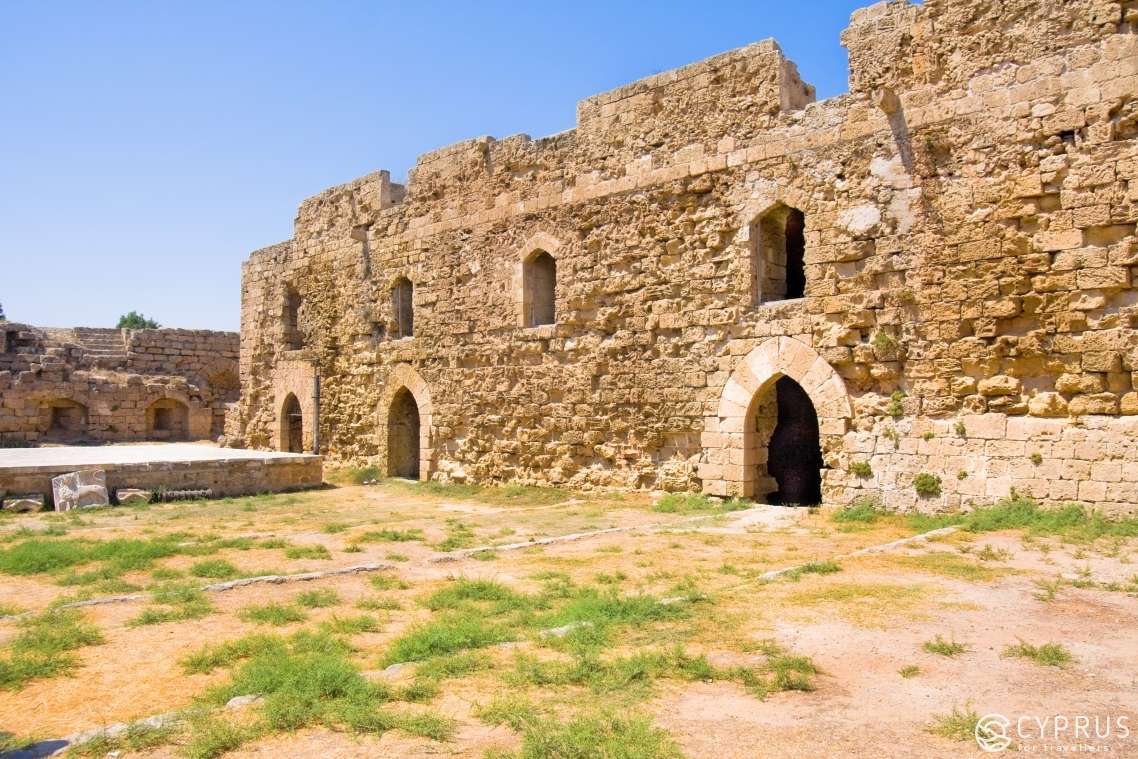
Muslim Architecture then took the place of its medieval counterpart: Sultan Selim II invaded Cyprus with his army of Ottoman-Turks (on the 9th September 1570, Nicosia fell, and on the 1st August 1571, the fortress of Famagusta surrendered to the mercy of the victors). New types of architectural constructs began to emerge on the island, beginning, of course, with mosques (it wasn’t uncommon for gothic cathedrals, which had been rebuilt by Turks, with minarets attached to their ensembles, to then perform this role) Turkish baths and inns (coach-houses).
The Colonial Period (the last third of the 19th to the first half of the 20th century) began with the arrival of the British. Generally, the concept of “colonial style” originates from the Latin colonus — an ancient Roman settler, a land tenant or a person residing in a province. Interestingly, the name “Cologne” derives from the same word “colonus”, for after all, the ancient Roman settlements of Gaul, Rhineland and Britannia were of particular significance to the development of European art. The colonial style became a component of what was termed as Victorian style in England (alongside the late neo-gothic style, samples of which, in fact, are also represented in the majority of provincial pieces of architecture used as places of worship in Cyprus).
As it was in the architecture of religious buildings, the colonial style was also reflected significantly in administrative and public buildings, as well as in large private residences. The British rulers were reputed for being fond admirers of the ancient Greek classics. As is visible through their numerous projects, the neoclassical style was employed in the construction of many buildings throughout the large colonial cities of this once mighty empire.
The famous researcher, Kostas Georgia, who dedicated years of work to his book (The Architecture of the British Colonial Administration, 1878-1960, by Costas Georghiou) states that the concept of a particular example of British colonial architecture did not exist. Thus, the main principle, in the words of the Cypriot scientist, became the very absence of “a single typical British architectural style….. [in Cyprus] as in all colonies: everything changes with time and circumstances….”
The heritage of this period in the country’s architecture includes more than 700 preserved administrative and private buildings, in addition to a vast infrastructure of roads, buildings and other constructs.
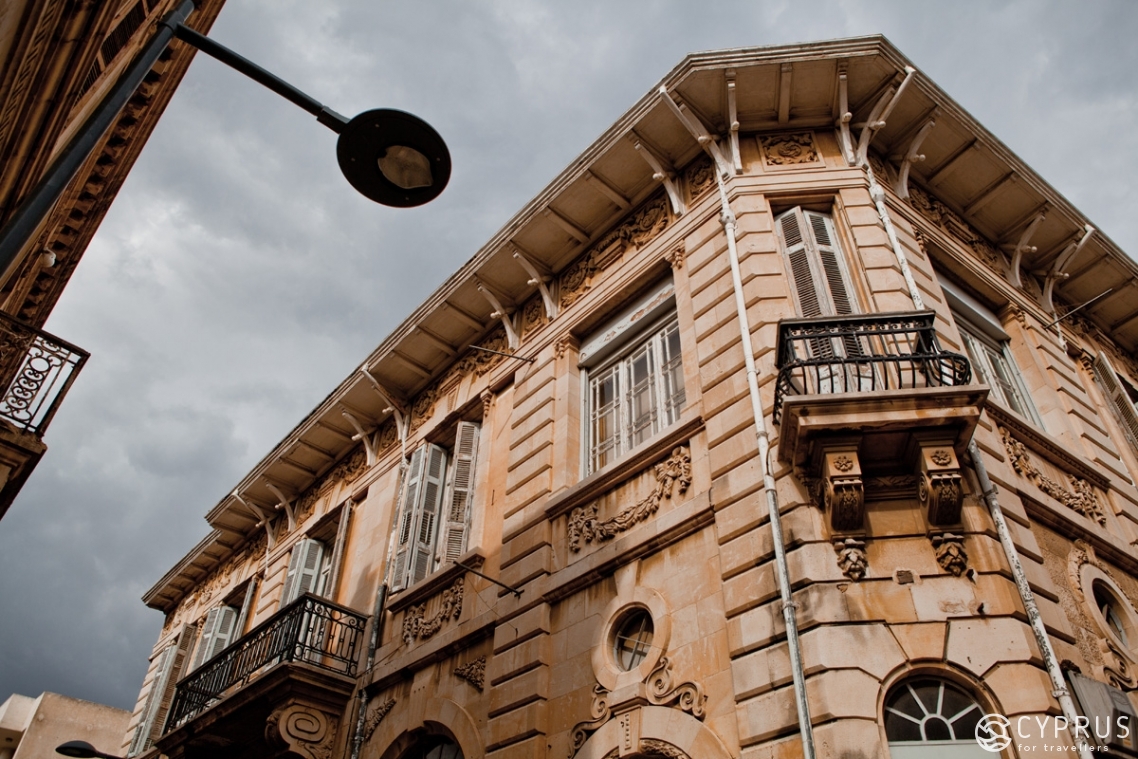
This period was characterised by the assimilation and decorative insight of local architectural tradition, eclecticism and an abundance of detail (this was displayed rather often in the construction of residences of British rulers and government officials).
In fact, this concerned the installation of interiors with a characteristic “vinaigrette” of the classics, various authentic accessories, dark wood furniture and local household items and fabrics — in keeping with British traditions. As such, the current customary style of the “English cabinet” is actually colonial chic: a combination of carved, stained (or polished) wood, light wallpaper (wall paint coatings) and a “collection” composed, as a rule, of an assortment of knick-knacks and trinkets.
Naturally, the islanders had mixed feelings towards the colonial architecture, which served the interests and needs of the island’s rulers. There are three main periods which differ from one another: from 1878 to the first world war; the interwar period; and 1945-1960, right through to Cyprus gaining independence.
Of the most eye-catching examples, it is worth naming a rather ambitious two-tier complex in Nicosia (between three streets, Lord Verona, Michael Karaoli and Dimosfeni Severi): it is a U-shaped building with several separate sections in the inner courtyard, which used to be the offices of the British consul, but now house the Ministry of Internal Affairs. Built at the beginning of the 1920s and reconstructed in 1937, this ensemble is well adapted to Cyprus’ climate: in addition to a sandstone lining with massive walls, it has a portico on its perimeter, several roof windows for ventilation on а red-tiled, gable roof, and so on.
The October uprising of 1931 strongly influenced the change in the island’s colonial style [editor’s note, E.K-T: in the midst of the civil unrest caused by the introduction of high taxes, the first building of the colonialists was burnt down, namely the Governor of Nicosia’s residence. The uprising, over the course of which 15 Cypriot protesters were killed and 60 wounded, was quashed a day later by British troops]. As a result, the British were all the same forced to introduce some changes, including to their own architecture, having enriched it in accordance with local traditional elements, while striving by any means to show “respect” to the local culture and the island’s historical heritage.
After the Second World War had ended, it became evident that the notion of colonised countries had lost its footing all over the world; colonial governments (in particular, the English, who had been famed for their pragmatism) began using the so-called “neutral style of the commonwealth” without any symbolism and subtext, ensuring they avoided the previous rationale: “divide and conquer”.
Modern architecture became no exception, and like in many regions of the Mediterranean, it embraced and developed according to the canons of functionalism and brevity, conceived by the German architectural school of Bauhaus (1919-1933); it was also influenced by the creativity of Ludwig Mies van der Rohe (1886-1969), the style of whose works was based on the concept of universal abstract form.
In modern villas and town manors, like in many other countries, trends were observed, which remained rather close to traditional Cypriot architecture, such as the main room of a private house — often a two-tier windowed, open-plan living room. Around it, according to the recommendations of Gropius and Mies van der Rohe, the secondary rooms were grouped together. The greatest boom in construction took place during these years in Limassol, which over time earned the reputation of an international business centre.
And yet, the mentality of Cypriot culture, which has undergone many centuries of development, has always shone brightest through its traditions.
Traditional Architecture
It is no secret that forms of resettlement, as well as types of populated localities and their constructions, depend on a location’s topography, its climate conditions, the materials available and their properties, and also on various socio-economic factors. Villages always “grow” organically in any natural landscape, be it in steep mountain ranges, shallow sloping hills or valleys, forming a remarkable union between natural and artificial environments. In the past, settlements were compact, with dense building developments and narrow, unpaved or cobbled streets, which also connected villages to arable lands in the outlying districts.
The temple — this was the historically determined centre of any settlement, a place of consolidation and communication for all its residents and the centre of its socio-economic activity. Other publicly significant buildings were rare, and were usually built along the village’s main road.
So, if the main construction material for public buildings (on the whole, for tasks of monumental constructions) was hard stone, then in the private sector, this role was fulfilled either by the stones of softer rocks (shell stone, sand stone and so on), or by raw brick (14x38/40 cm in length, and no less than 12 cm thick) made from a mixture of clay, straw and small pebbles. This allowed the stones to be filled and dry out in the sun.
The Country House
The introverted character of the local community is well reflected in the organisation of such a house: its construction was driven exclusively based on reasons of feasibility for a specific family and in rather strict accordance with requirements of symmetry.
The enclosed inner courtyard was the heart of the house, the main space, where people spent most of their time, as did the household livestock. Surrounded by high walls, the courtyard was an integral and necessary element of the residential space and provided access to various parts of the house; as a rule, two or three “makrinaria” (small, narrow rooms), storerooms and/or “dikhoro” (the main room/ living room), which were always built nearby the borders of the plot, either in a linear or U-shaped plan. The exit into the courtyard could be accessed either directly, or through an arched portico. The inhabited rooms were all separate from one another, and their doors usually exited only into the inner courtyard. The dikhoro was considered the main, internal space of the house and had several functions: here guests would be received, family members would gather and household pets would often dwell. Interestingly, these spaces were formed by doubling the width of a makrinaria, often by installing a stone archway in the wall. If an archway was erected, this space was called a chamber (or “palace”).
The ilykaos (or “sun room”) was the most important element and the most interesting morphological characteristic of a traditional home in Cyprus. This space, as a rule, was orientated to the southern side of the house; along the entire length of one side, it was completely open thanks to the installation of one or more archways, or beams on pillars. The ilyakos also provided access to the adjoining rooms of the house.
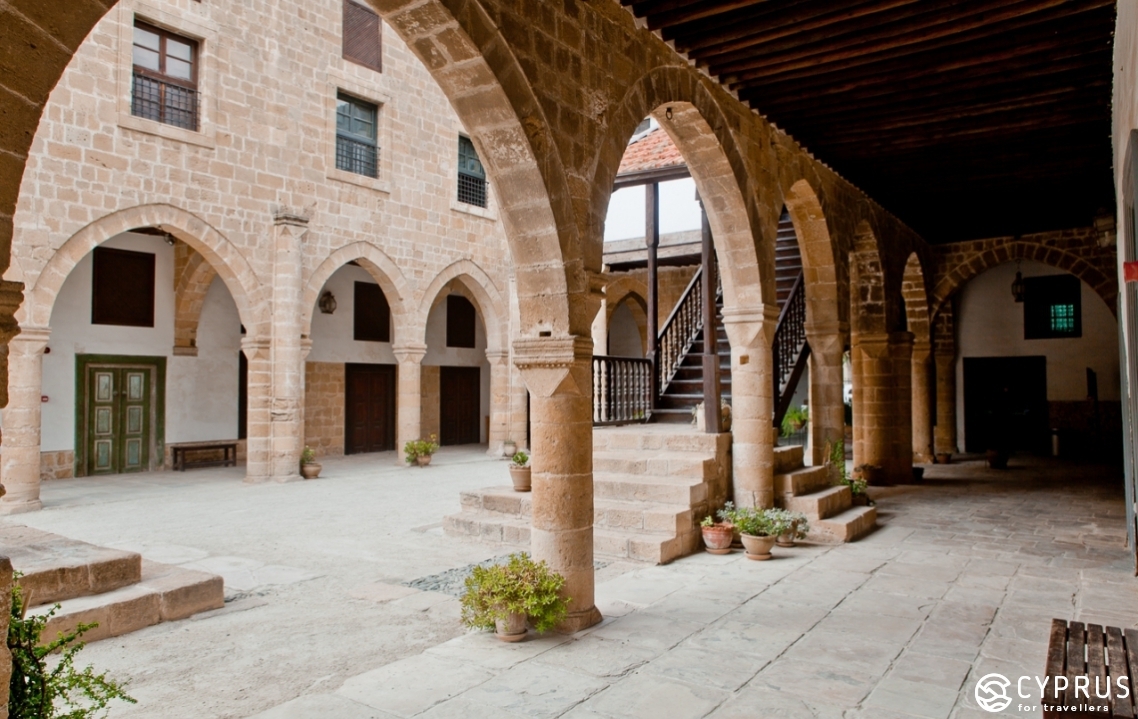
Doors and windows were made small; there was only one exit into the street, through the front door, above which there was an “arsera” (a roof window) — for ventilation and additional light.
Curiously, despite Cyprus being a southern country, builders have always tried to position houses facing to the south or east, in order to expose rooms to as much sunlight as possible.
An upper floor was constructed if the plot was too small and did not afford the family enough room to build utility and working space. Access to the bedrooms on the second floor was always through an external stone or wooden staircase, positioned in the courtyard opposite the facade of the main house; these stairs led to a small wooden-roofed balcony (or an open terrace).
In mountainous areas, where the terrain fundamentally limited the space available for living residences, an inner courtyard was rarely constructed. The residences themselves seemed as though they were rising several levels, mounting the steep slopes, while the entrance to each of the subsequent floors could only be built along the street, which meandered along the slopes of the hill or mountain. On the very top floor of a house, an ilyakos was usually constructed; most often as a roofed veranda.
Depending on the region, the development type and the style of the house somewhat changed: for instance, if in the mountains, considering the small plot areas, one could encounter homes built akin to towers, reaching three or more floors in height (the mountainous villages of Kakopetria, Kalopanayiaotis); then in the valleys — it was completely different. Here large gardens and vegetable patches would surround one to two-floor buildings (in the region of Famagusta, it was most often one-floor) of a comparatively small size, in which living rooms would be joined together with utility rooms via a large roofed veranda or a portico with columns and archways.
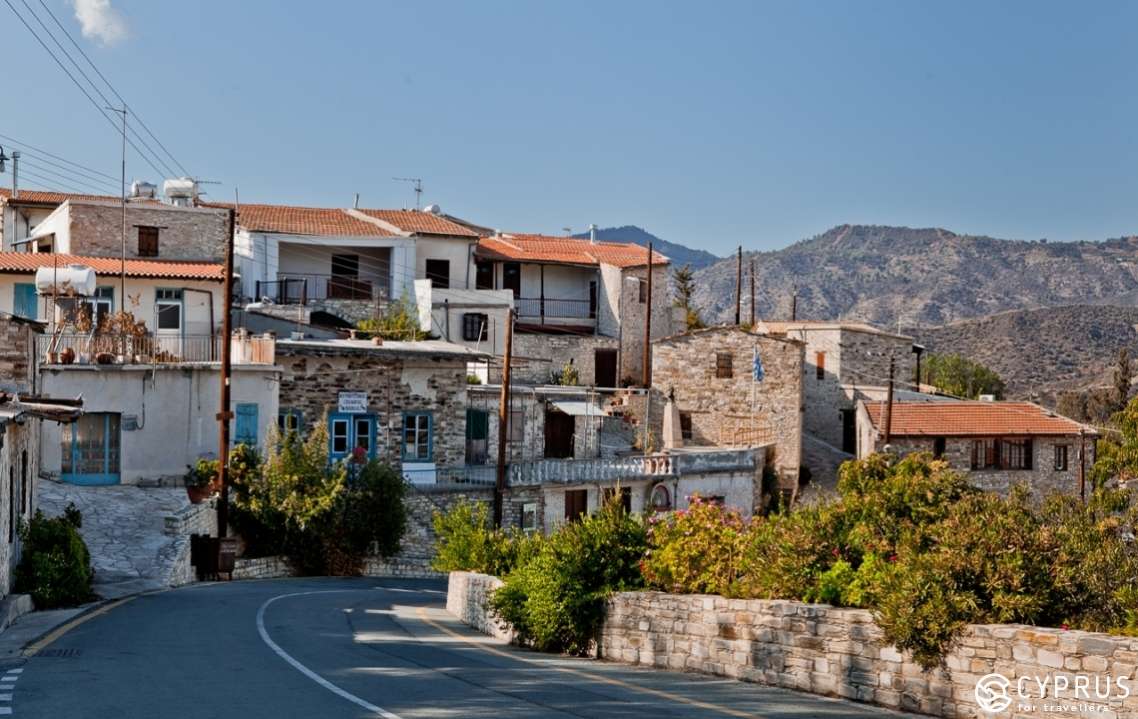
As we mentioned earlier, raw brick in Cyprus was very popular thanks to its low cost and ease of manufacture, that is to say “out in the field”. Unwealthy villagers’ homes, more often one floor high, were built from those very clay bricks, but with mandatory archways (many of these can be seen in villages, situated in the vicinity of Ayia Napa: the traditional architecture of the pre-neoclassical “formation” has been preserved to the greatest extent in the villages of this coastal region).
Along with stone and brick, it is worth acknowledging vines (a lattice weave of mats for constructing ceiling covers), wood and metal as the basic structural materials in Cyprus. As has long been the case everywhere, local builders have used trowels, plumb lines, measuring squares and instruments, wedges for splitting stone blocks into the necessary shape and size and wooden forms for manufacturing raw brick (as was visible in the regional history museum in Steni).
As for transport, it is true that the common bicycle has been widely used in past years (as much as donkeys, camels and trucks), largely for “transferring” builders to construction areas.
The Town House
The move from rural to urban living began at the end of the 19th century, practically when the age of the Ottoman empire’s dominion on the island had come to an end. This phenomenon coincided with the emergence in Cyprus of the middle class, as a result of socio-economic reconstruction, which was also reflected in the local architecture.
The act of positioning the main building (estate) in the depths of the countryside was becoming antiquated — now a new form of urban housing (and new urban development as a whole) was being projected, as the element of a single ensemble (a unit), mirroring the social status of its owner.
As such, the private house was gradually being “moved” by the facade to the front of the plot, where it would exit into the street, forming what was known as a “red line”. The new style, which modernisation required, conformed with the aesthetic conception of neoclassicism (fundamentally — the establishment of “integrity in unity”); its morphological elements not only decorated the buildings of urban estates, but had an influence on the more modest constructs of that period, as was the case within the city limits and the countryside.
The main premises (rooms) of an urban residence were mapped out and constructed simultaneously, and not on a step-by-step basis, over time “spreading apart”, like in a more traditional society.
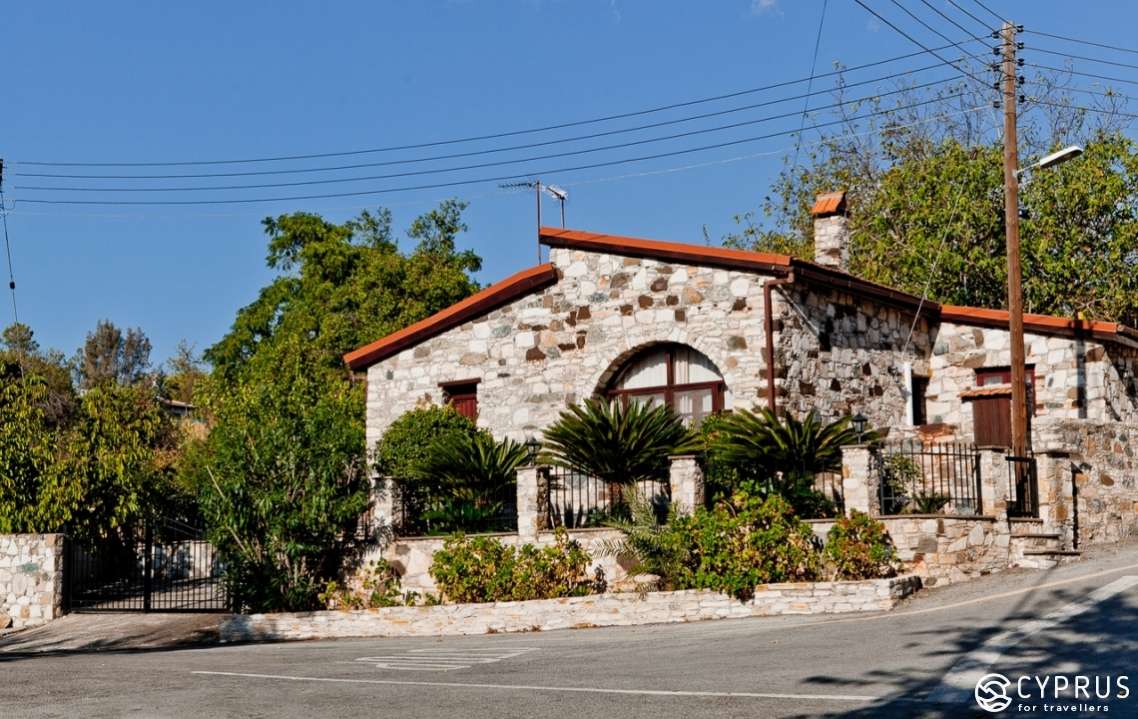
The homeowner — a representative of the middle class — started building their own living space, which satisfied their individual requirements.
Interestingly enough, the main scheme in this space was all the same adopted from that of a rural house. Over some time, various zones (the kitchen, bathroom and laundry room) were, as before, moved from the main building into separate premises
The internal room plan was organised according to the principle of concentrating around the nucleus — the main room, where members of the household gathered and where guests were received. This central greeting hall — an ilyakos — was located opposite the street-side entrance, while along its sides were situated one or two makrinaria living rooms. [We could see a similar situation, for example, in the Museum of Regional Art in Limassol, located in a traditional house]. Initially, an ilyakos had an open archway directed towards the inner courtyard, but this later changed to a closed-door archway.
Regarding symmetrical houses, the balance between their elements were also reflected in the appearance of their facades: the front door (the entrance) was positioned in the centre and flanked on both sides by windows. In those cases when the main building was situated deep into the plot and not along the red line of the street, a portico could be situated above the entrance with a wing along the entire facade of the house. The side facades of urban manors also had windows, therefore acquiring a certain compositional significance.
The strict symmetry of a living residence’s room plan later became more flexible. If the width of the plot permitted it, one of the makrinaria could be completely transformed into a “dikhoro” with the additional installation of an archway and the creation of a “double” living room or salon; while other rooms, on the contrary, began to be mapped out in a more compact size, although still elongated.
The final evolutionary stage of the urban dwelling was marked by the conjoining of all rooms under one roof and becoming a single “block”, composed of identical units and located in the town limits. Inside the residential area, three-sided organisation of the rooms was still used. One part of the ilyakos could be divided in the middle by a glass pane, forming a veranda in the back part of the house. Despite the difference in room plans, all buildings were still covered by a brick roof with four sloping surfaces.
Stone in the Modern Construction Industry
It needs to be said that, mainly due to economic reasons, people are nowadays cutting down on the use of natural stone as a fundamental construction material. Although, it is still used largely in reconstruction work and for supporting the good condition of stone houses of traditional architecture, as well as for archaeological artefacts once crafted from stone.
There is a wide range of building and decorative stones, which are mined and used today in Cyprus: alabaster, chalk, siliceous, reef and other limestones, calcarenite, pebbles, gravel and diabase.
With the introduction of new technologies, industrialisation and linking to this the use of simpler materials in construction and refinement; a change in the mentality of the Cypriot population is occurring, which has inevitably deviated from the island’s traditional architecture.
In the 1950s-60s, the young Cypriot architects of those years, who had been educated abroad, were returning to their homeland, bringing with them ideas of modernism.
As a result, over the years which have passed since Cyprus proclaimed independence, the urban landscape has significantly changed, being transformed in accordance with the unified international style.
The first high-rise buildings then appeared on the island. Their physical appearance mirrored the technological achievements of the building sector. A large number of public buildings, including schools, were erected in this period, as was the main part of the island’s tourist infrastructure, built to solve the task of accommodating a constantly increasing influx of tourists, travellers and businessmen. This new architectural style was also employed in urban residential developments.
After a long period of oblivion, when traditional architecture was identified with primitiveness and obsolescence; the historical style (along with modern trends) was again redefined and rated anew based on its worthiness as an important and necessary element of the island’s cultural heritage. In the present day, thanks to a renewed interest in the history of rural and urban settlements, the traditional village silhouette of development is being restored and rural areas are being brought back to life. The Government of The Republic of Cyprus supports this trend, stimulating restoration projects and contributing to the organisation of events aimed at informing the public of the value of traditional Cypriot architecture.
Several examples of such an initiative…
In 2016, at the Cyprus contest “Cultural Village” involving creating a new cultural centre, the company Petras Architects won third place (with a total area of 1522 square metres). According to the task appointed to participants: alongside construction of the new building, the existing buildings had to be adapted to the new concept. And so, it was necessary to combine the art school, living accommodation and workshop into an ensemble, in addition to the premises used for public activity. Petras proposed the “Minimum Domus” — the creation of cubes (a modern allusion to the theme of the ancient constructs on the neighbouring archaeological plot), which would multiply and unfold around the centre; by converging and fusing with the surrounding (including its architecture) environment, they would also offer а variety of opportunities and conditions for people.
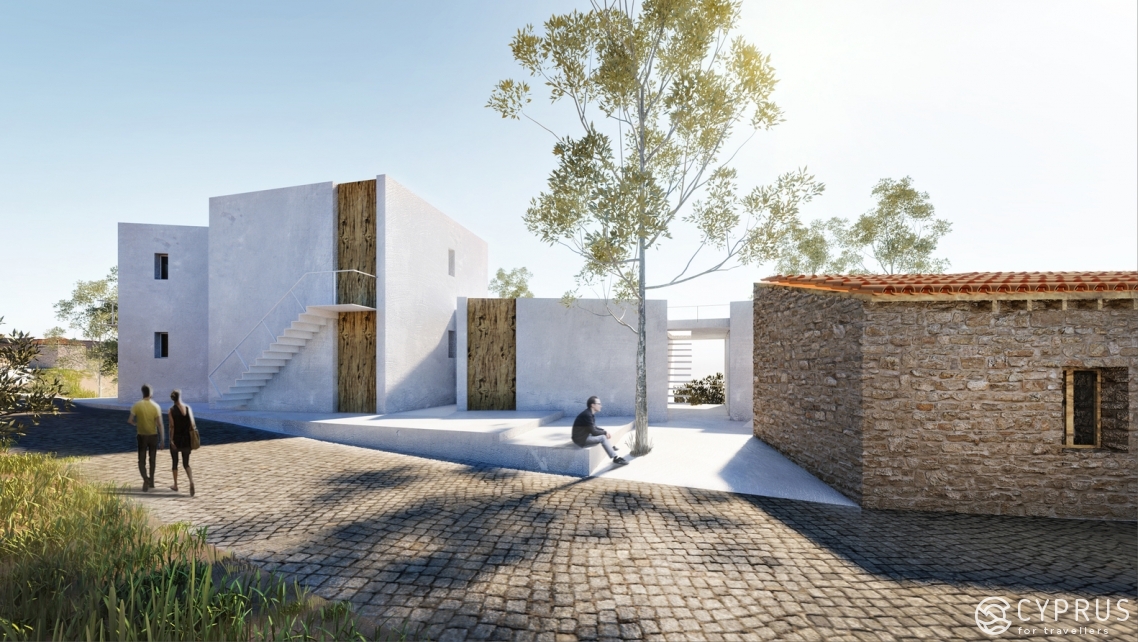
One can also consider the work of the two architects, Alkiviadis Pyliotis and Evangelos Fokialis, as another interesting example. They were awarded the second prize at the European architects contest (European architectural competition for the new Cultural Village of Lemba), the aim of which was to call upon architects to create new art spaces, which would contribute to the development of the “cultural” countryside.
Named “Inherent Simplicity” (with a total area of 2150 square metres) their proposal was founded on placing architectural archetypes which cooperated with the natural environment. The founders emphasised the concept of “the importance of life in the open air, of the social cosmos and a live, mutual relationship with nature in conditions necessary for artistic creation”.
In accordance with the contest’s requirements, the project was to create a spatial dialogue between old, new and traditional buildings. The proposed ensemble consisted of three parts: a square, school and guest house — all parts were to be facilitated by the Cyprus College of Arts.
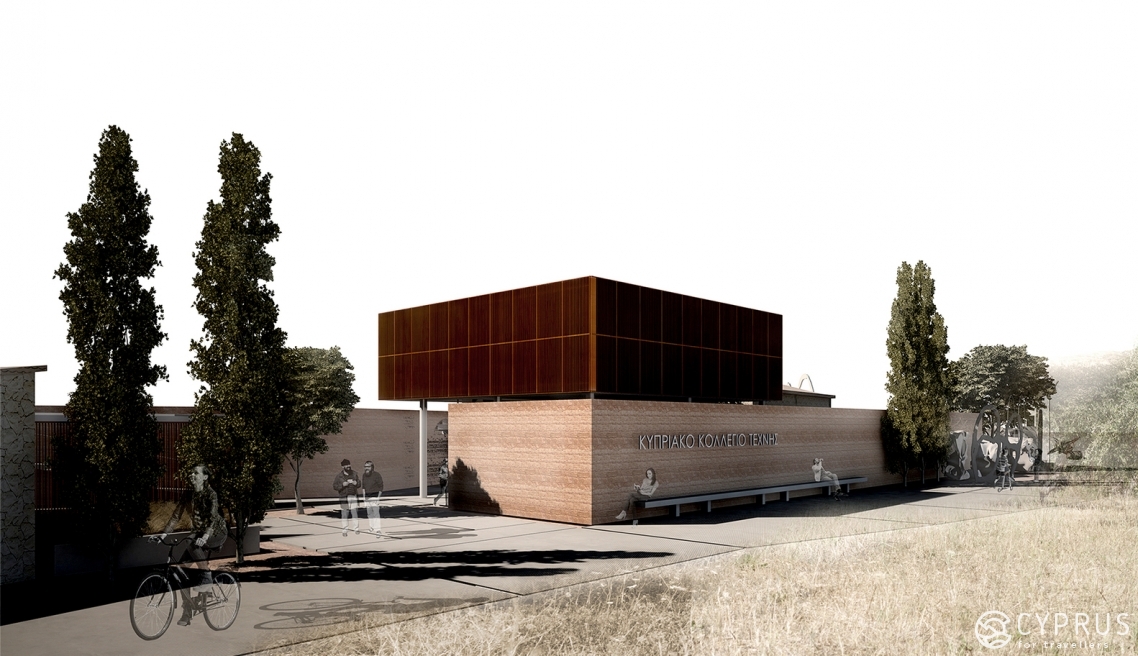
For more, see: www.architecture.org.cy
The third project recently brought to life and worth mentioning was the Centre of Ecological Information and Education at Cape Greco, by the architects Marios Economides and Maria Agelidou, who were recipients of the 2017 Mies Van Der Rohe award in the European Architecture Competition. The main task for the Forest Department of the Republic of Cyprus was to create a special centre for raising awareness of the issues associated with a consumerist society, coexisting with vulnerable natural ecosystems. The new centre (with a total area of 895 square metres) was to be built on the territory of the Cape Greco nature reserve, where it would provide visitors with information and showcase pieces detailing land and marine ecosystems. Visitors would also be able to indirectly familiarise themselves with the unique characteristics of the region.
The building is also used as a study centre for those at primary and secondary schools and is a part of the Department’s corresponding programme with the Ministry of Education. The centre includes a reception, lecture hall, a classroom and eco-room for briefings, an exhibition hall, three sea aquariums, as well as a relaxation room and utility rooms. Construction was completed in July 2015, with an overall cost of close to 1.4 million euros.
As a result of the primary run, the main aims of the project were formulated: to create a morphologically simple building, which would be a natural continuation of the local landscape, with a minimisation of the negative impact on the environment.
The choice of materials used is directly in touch with the surrounding natural environment and landscape. Here it is possible to sense the visitor’s trustworthy attitude to the outside world: it either opens to them immediately or step-by-step and cyclically.
The surrounding open territory is restricted by two elongated walls, built from metal cells filled with crushed rock. Visitors are offered to go on a journey of sorts, passing through into the building’s inner space. Two terraces are positioned consecutively between the interiors, organising the main part of the space and enriching the architectural composition with internal spatial relationships. These terraces simultaneously act as regulators of the building’s microclimate with passive cooling and natural ventilation.
The Centre’s exhibition hall is the result and goal of the victor’s “journey” into the building. The Mediterranean sea, which can be seen on the horizon from the entrance to the hall, opens up to visitors as though they are looking at it through an observatory frame.
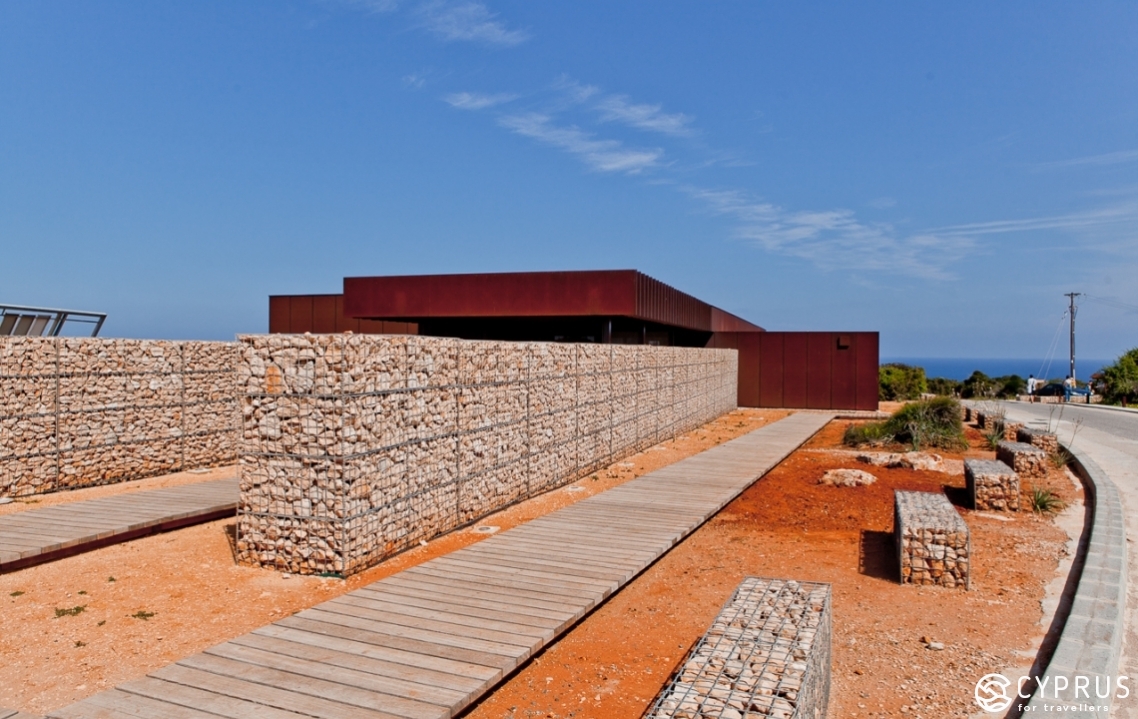
It would be wise not to forget about the architecture of the occupied territories of so-called Northern Cyprus; for modern architecture has also been developing there.
At the beginning of the 1990s, postmodernist architectural classicism emerged on the island’s northern territories. After 2003, this trend, which had appeared here with an evident delay in comparison to the international postmodernist movement, significantly strengthened. The majority of buildings and constructs (residential, commercial, tourist and recreational), regardless of their purpose, mirrored the noticeable influence of western classicism. This contrasted with the influence of Turkish architectural tradition, whose figurative (or to the contrary, rather abstract) elements have determined the image of postmodern architecture since the 1980s in Turkey itself.
Thus, one can say that since the beginning of 1990, all the main, international, postmodernist categories of classicism: “figurative”, “abstract” and “ironic”, have been applied to the architecture of local buildings in Cyprus. It is considered that the rights of ownership of many of these projects belongs to Turkish architects and designers, the majority of whom have remained anonymous; for after all, officially they are stated as Turkish-Cypriot specialists.
So far, 16 buildings, built in the modern style, can be distinguished from the rest: in Kyrenia (Girne) in the northern coast, in the northern part of the divided capital of Nicosia (Lefkosia), in Famagusta (Gazimagusa) and in the countryside of Volokida (Bafra) on the Carpasia peninsula.
Amongst the most interesting: the hotel and casino “Colony” (1998-2002); the main office of “Kaner” (2006); the Lion’s Garden (2006); the campus complex of Cyprus International University, — the works of the architect Alex Brown (after 1997).
A number of researchers believe that the number of “abstract classical” buildings in so-called Northern Cyprus is significantly higher than those which are figurative. The “abstract-classical” beginning by and large manifests itself in residential, commercial and hotel architecture.
-
And sо in the modern day, the architecture of Cyprus continues to live on and develop, as it has done for so many years, with its well forgotten past finding new meaning in the creations of young architects and project workers.
Our short excursion has now reached its end and soon we will head on further, to learn about regional art and the island’s crafts.
Until next time!
